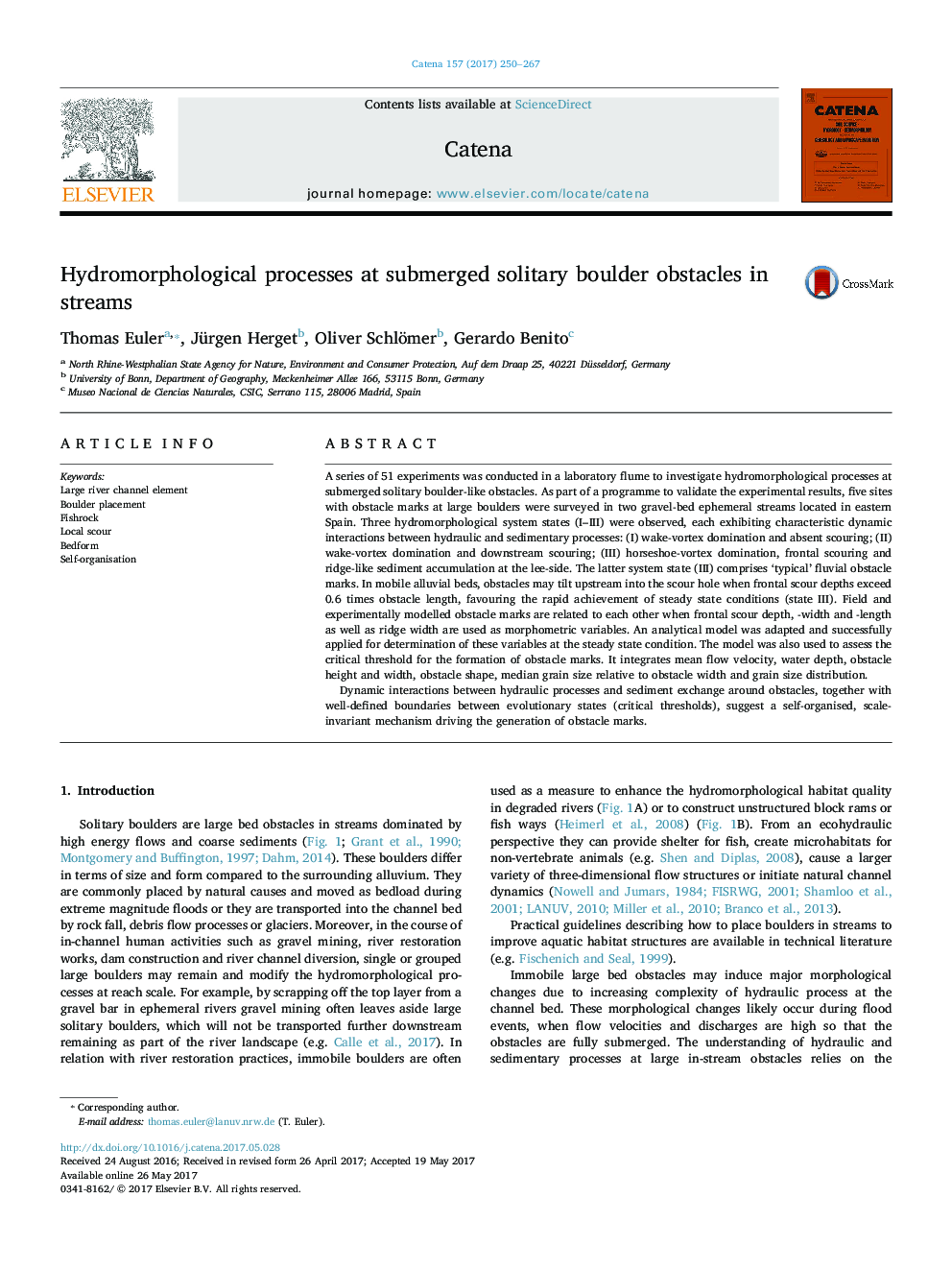| کد مقاله | کد نشریه | سال انتشار | مقاله انگلیسی | نسخه تمام متن |
|---|---|---|---|---|
| 5769863 | 1629197 | 2017 | 18 صفحه PDF | دانلود رایگان |
- Flume experiments were conducted to study processes around submerged boulder-like obstacles.
- Field surveys at boulders in ephemeral streams were compared to experimental results.
- Corresponding bedforms around in-stream boulders were classified into three states.
- Generation of these bedforms is driven by self-organising mechanisms.
- Our analytical model identifies critical thresholds and determines key morphometric variables.
A series of 51 experiments was conducted in a laboratory flume to investigate hydromorphological processes at submerged solitary boulder-like obstacles. As part of a programme to validate the experimental results, five sites with obstacle marks at large boulders were surveyed in two gravel-bed ephemeral streams located in eastern Spain. Three hydromorphological system states (I-III) were observed, each exhibiting characteristic dynamic interactions between hydraulic and sedimentary processes: (I) wake-vortex domination and absent scouring; (II) wake-vortex domination and downstream scouring; (III) horseshoe-vortex domination, frontal scouring and ridge-like sediment accumulation at the lee-side. The latter system state (III) comprises 'typical' fluvial obstacle marks. In mobile alluvial beds, obstacles may tilt upstream into the scour hole when frontal scour depths exceed 0.6 times obstacle length, favouring the rapid achievement of steady state conditions (state III). Field and experimentally modelled obstacle marks are related to each other when frontal scour depth, -width and -length as well as ridge width are used as morphometric variables. An analytical model was adapted and successfully applied for determination of these variables at the steady state condition. The model was also used to assess the critical threshold for the formation of obstacle marks. It integrates mean flow velocity, water depth, obstacle height and width, obstacle shape, median grain size relative to obstacle width and grain size distribution.Dynamic interactions between hydraulic processes and sediment exchange around obstacles, together with well-defined boundaries between evolutionary states (critical thresholds), suggest a self-organised, scale-invariant mechanism driving the generation of obstacle marks.
Journal: CATENA - Volume 157, October 2017, Pages 250-267
